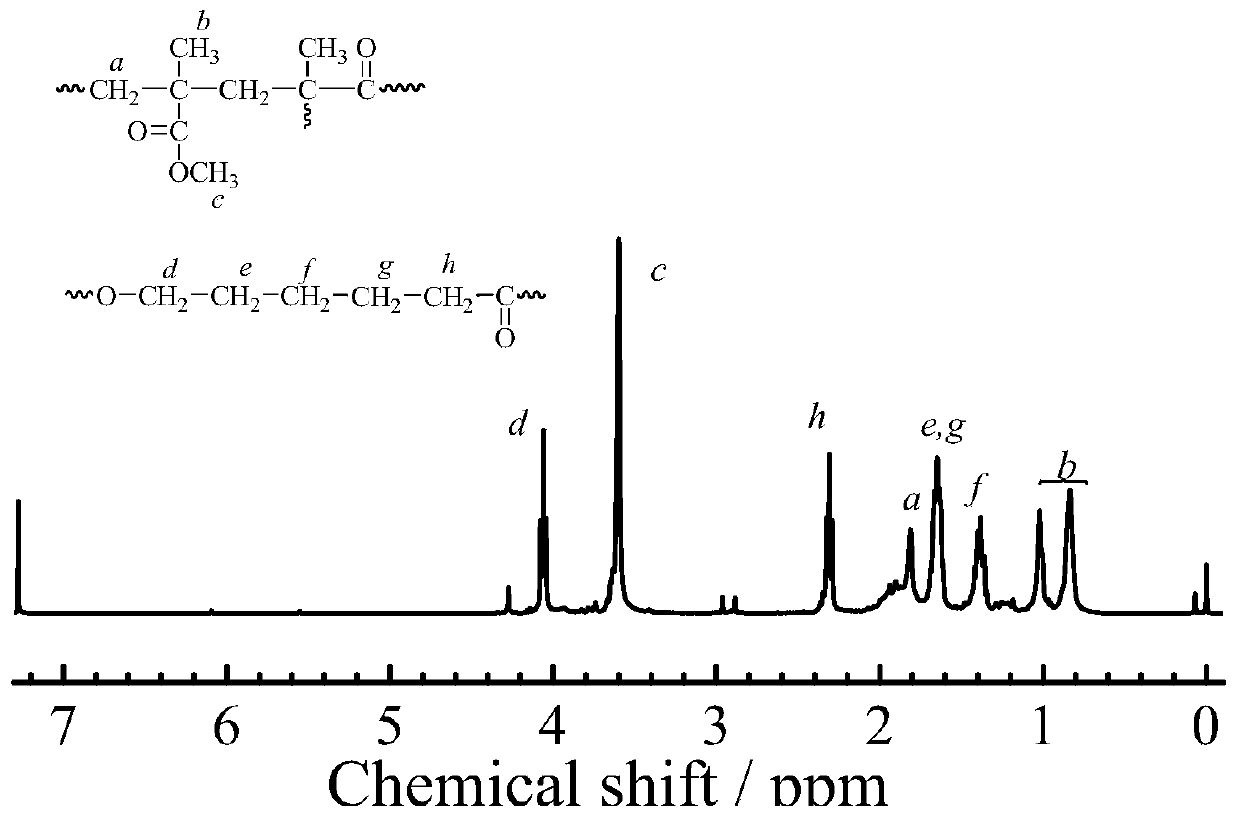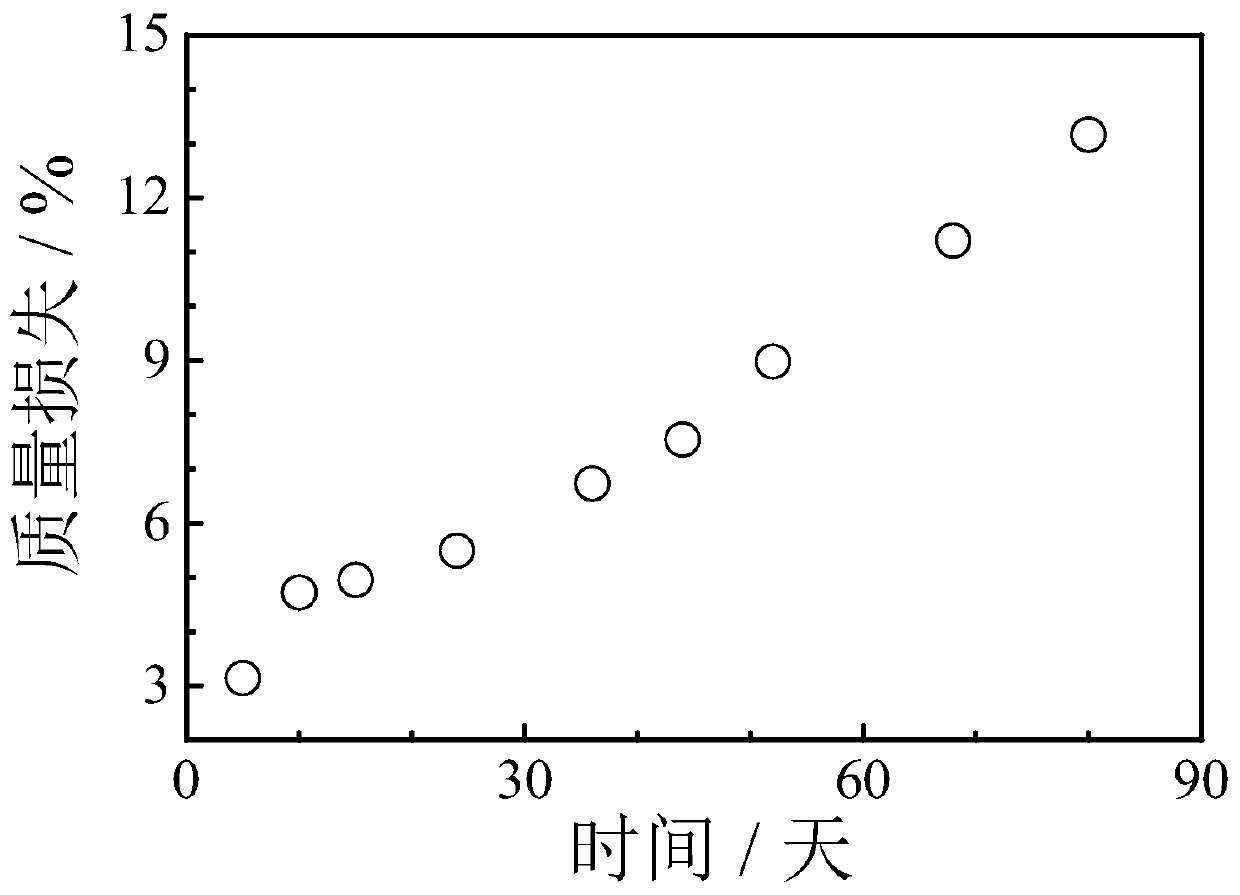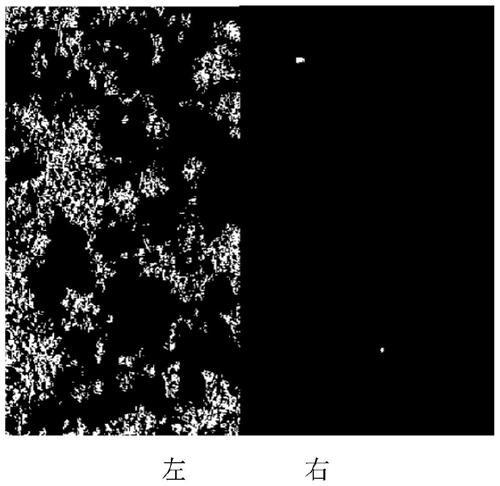Preparation method for self-polishing antifouling resin
An antifouling resin and self-polishing technology, applied in antifouling/underwater coatings, biocide-containing paints, coatings, etc., can solve the problem that the cyclic ester monomer is expensive, restricts the industrial production of self-polishing antifouling coatings, Single type and other problems, to achieve the effect of long-term antifouling, low cost and simple preparation process
- Summary
- Abstract
- Description
- Claims
- Application Information
AI Technical Summary
Problems solved by technology
Method used
Image
Examples
Embodiment 1
[0028] Get 11.41g ethyl methacrylate, 2.60g molecular weight is the polycaprolactone oligomer of the terminal double bond of 2600g / mol, 0.27g α-ethyl chloropropionate, 0.14g cuprous bromide and 0.31g bipyridine Place in a stirred 150mL round-bottomed flask, then add 14.01g of diethylene glycol dimethyl ether as a solvent, freeze with liquid nitrogen, replace argon three times, and then place it at 60°C for 24 hours. After the reaction, the reaction product was dissolved in tetrahydrofuran and then precipitated in 1000 mL of anhydrous methanol to obtain a resin for self-polishing antifouling coatings. The polymer weight average molecular weight is 4.02×10 5 g / mol, the molecular weight distribution is 5.73. The resin was coated on the steel plate pre-coated with anti-corrosion primer, and the shallow sea hanging plate test showed that no marine organisms grew on the surface within 8 months.
Embodiment 2
[0030] Get 10.01g methyl methacrylate, 5.00g molecular weight is the polyglycolide oligomer of the terminal double bond of 500g / mol, 1.95g α-bromo ethyl isobutyrate, 1.08g ferrous bromide and 1.56g bismuth Dipyridine was placed in a stirred 100mL round-bottomed flask, then 15.01g of tetrahydrofuran was added as a solvent, frozen in liquid nitrogen, replaced with argon three times, and placed at 40°C for 24h. After the reaction, the reaction product was dissolved in tetrahydrofuran and then precipitated in 500 mL of anhydrous methanol to obtain a resin for self-polishing antifouling coatings. The polymer weight average molecular weight is 1.28×10 5 g / mol, the molecular weight distribution is 8.33. The resin was coated on the steel plate pre-coated with anti-corrosion primer, and the shallow sea hanging plate test showed that no marine organisms grew on the surface within 8 months.
Embodiment 3
[0032] Get 8.61g methyl acrylate, 3.80g molecular weight is the poly(lactide-caprolactone) oligomer of terminal double bond of 3800g / mol, 0.50g molecular weight is the polyethylene glycol methyl acrylate of 500g / mol, 0.76 g methyl-2-(dodecyltrithiocarbonate)-2-methylpropionate, 0.17g azobisisobutyronitrile was placed in a stirred 150mL round bottom flask, then added 12.41g Toluene was used as a solvent, frozen in liquid nitrogen, replaced by argon three times, and reacted at 80°C for 24 hours. After the reaction, the reaction product was dissolved in tetrahydrofuran and then precipitated in 1000 mL of anhydrous methanol to obtain a resin for self-polishing antifouling coatings. The polymer weight average molecular weight is 4.89×10 5 g / mol, the molecular weight distribution is 6.91. The resin is coated on the steel plate pre-coated with anti-corrosion primer, and the shallow sea hanging plate test shows that no marine organisms grow on the surface within 10 months.
PUM
| Property | Measurement | Unit |
|---|---|---|
| molecular weight distribution | aaaaa | aaaaa |
| molecular weight distribution | aaaaa | aaaaa |
| molecular weight distribution | aaaaa | aaaaa |
Abstract
Description
Claims
Application Information
 Login to View More
Login to View More - R&D
- Intellectual Property
- Life Sciences
- Materials
- Tech Scout
- Unparalleled Data Quality
- Higher Quality Content
- 60% Fewer Hallucinations
Browse by: Latest US Patents, China's latest patents, Technical Efficacy Thesaurus, Application Domain, Technology Topic, Popular Technical Reports.
© 2025 PatSnap. All rights reserved.Legal|Privacy policy|Modern Slavery Act Transparency Statement|Sitemap|About US| Contact US: help@patsnap.com



